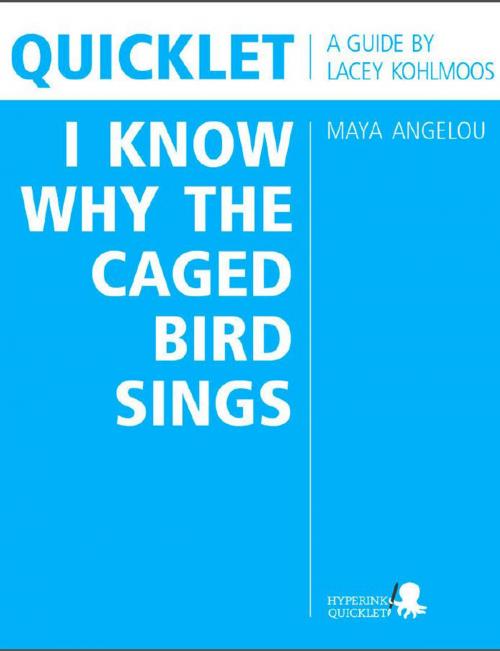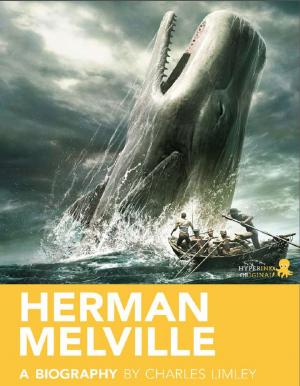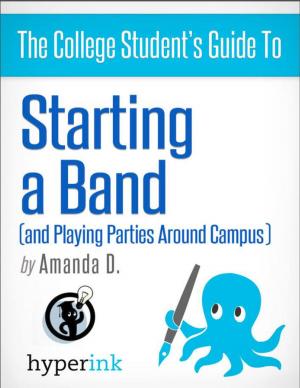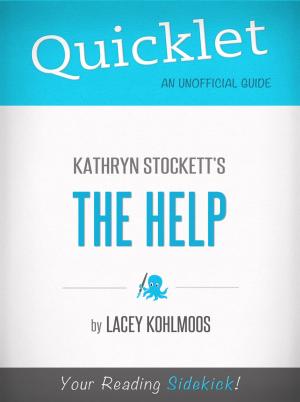Quicklet on Maya Angelou's I Know Why the Caged Bird Sings (CliffNotes-like Book Summary and Analysis)
Nonfiction, Reference & Language, Study Aids, Book Notes, Art & Architecture, General Art| Author: | Lacey Kohlmoos | ISBN: | 9781614646839 |
| Publisher: | Hyperink | Publication: | July 30, 2012 |
| Imprint: | Hyperink | Language: | English |
| Author: | Lacey Kohlmoos |
| ISBN: | 9781614646839 |
| Publisher: | Hyperink |
| Publication: | July 30, 2012 |
| Imprint: | Hyperink |
| Language: | English |
ABOUT THE BOOK
The caged bird sings with a fearful trill
of things unknown but longed for still
and his tune is heard on the distant hill
for the caged bird sings of freedom
One of the best and most influential books written in English since 1923. A biblical study of life in the midst of death. A New York Times bestseller. A National Book Awards nominee. One of the essential books produced by our culture. One of the most banned books in America. All of these phrases have been used to describe I Know Why the Caged Bird Sings.
The much-loved and oft-feared book is Maya Angelou’s autobiography. Within the context of her life story, Angelou dares to examine racism, sexism, familial bonds, feminine strength, religion, sexual violence, and the things we do survive. The story begins when she is three years old and sent with her brother to live with their grandmother in rural Arkansas. It ends with the sense of empowerment Angelou felt upon giving birth to her son Guy when she was only 17 years old.
Maya Angelou is now in her 80s and still revered for her wisdom, independence, and grace. She has managed to achieve great success as a writer, actress, dancer, director, musician, editor, activist, philanthropist, teacher, and mother. She is called doctor and has received countless honors. And yet Angelou never went to college. She was a single teenage mother. She grew up in rural, segregated Arkansas. She was mute for many years. She once lived in a junkyard for a month. When she was just eight years old, she was raped.
EXCERPT FROM THE BOOK
She didn’t want her family to think she was a bad person, but she felt awful about lying. Mr. Freeman received a light sentence and was released that day. His body was found that evening. Maya blamed herself for Mr. Freeman’s death and decided not to talk anymore for fear of hurting others. Not knowing what to do with Maya, the Baxter family sent her and Bailey back to Stamps. Bailey dealt with his devastation by making outlandish stories about St Louis, while Maya continued in her silence. Many of the townsfolk didn’t understand and thought she was uppity or simple. Momma and Uncle Willy simply accepted it with understanding.
Commentary
From today’s perspective, it seems almost criminal that the family never took Maya to a therapist. How could they ever expect a little girl to understand that what had happened to her and subsequently to Mr. Freeman was not her fault? How could they simply send her away when she stopped talking? And yet, in those days people didn’t talk about such things. The adults didn’t know how to deal with the rape, so how could they know how to deal with the little girl that was raped? They just didn’t talk about it and hoped that the experience would fade with time. It obviously didn’t.
Chapters 15 & 16
Summary
Mrs. Bertha Flowers is a wealthy, educated woman and the closest thing the black community in Stamps has to aristocracy. She and Momma have been friends for years. One day Mrs. Flowers comes into the store and asks Maya to carry her grocery bags home for her and visit for a little while. She tells Maya that speaking is very important in life and gives her a book to read aloud. Mrs. Flowers also challenges Maya to memorize some poems and recite them on her next visit.
Once Maya gets her voice back, she begins working for Mrs. Viola Cullinan...
Buy the book to continue reading!
Follow @hyperink on Twitter!
Visit us at www.facebook.com/hyperink!
Go to www.hyperink.com to join our newsletter and get awesome freebies!
CHAPTER OUTLINE
Maya Angelou's I Know Why the Caged Bird Sings
+ About the Book
+ Introducing the Author
+ Overall Summary
+ Chapter-by-Chapter Summary and Commentary
+ ...and much more
ABOUT THE BOOK
The caged bird sings with a fearful trill
of things unknown but longed for still
and his tune is heard on the distant hill
for the caged bird sings of freedom
One of the best and most influential books written in English since 1923. A biblical study of life in the midst of death. A New York Times bestseller. A National Book Awards nominee. One of the essential books produced by our culture. One of the most banned books in America. All of these phrases have been used to describe I Know Why the Caged Bird Sings.
The much-loved and oft-feared book is Maya Angelou’s autobiography. Within the context of her life story, Angelou dares to examine racism, sexism, familial bonds, feminine strength, religion, sexual violence, and the things we do survive. The story begins when she is three years old and sent with her brother to live with their grandmother in rural Arkansas. It ends with the sense of empowerment Angelou felt upon giving birth to her son Guy when she was only 17 years old.
Maya Angelou is now in her 80s and still revered for her wisdom, independence, and grace. She has managed to achieve great success as a writer, actress, dancer, director, musician, editor, activist, philanthropist, teacher, and mother. She is called doctor and has received countless honors. And yet Angelou never went to college. She was a single teenage mother. She grew up in rural, segregated Arkansas. She was mute for many years. She once lived in a junkyard for a month. When she was just eight years old, she was raped.
EXCERPT FROM THE BOOK
She didn’t want her family to think she was a bad person, but she felt awful about lying. Mr. Freeman received a light sentence and was released that day. His body was found that evening. Maya blamed herself for Mr. Freeman’s death and decided not to talk anymore for fear of hurting others. Not knowing what to do with Maya, the Baxter family sent her and Bailey back to Stamps. Bailey dealt with his devastation by making outlandish stories about St Louis, while Maya continued in her silence. Many of the townsfolk didn’t understand and thought she was uppity or simple. Momma and Uncle Willy simply accepted it with understanding.
Commentary
From today’s perspective, it seems almost criminal that the family never took Maya to a therapist. How could they ever expect a little girl to understand that what had happened to her and subsequently to Mr. Freeman was not her fault? How could they simply send her away when she stopped talking? And yet, in those days people didn’t talk about such things. The adults didn’t know how to deal with the rape, so how could they know how to deal with the little girl that was raped? They just didn’t talk about it and hoped that the experience would fade with time. It obviously didn’t.
Chapters 15 & 16
Summary
Mrs. Bertha Flowers is a wealthy, educated woman and the closest thing the black community in Stamps has to aristocracy. She and Momma have been friends for years. One day Mrs. Flowers comes into the store and asks Maya to carry her grocery bags home for her and visit for a little while. She tells Maya that speaking is very important in life and gives her a book to read aloud. Mrs. Flowers also challenges Maya to memorize some poems and recite them on her next visit.
Once Maya gets her voice back, she begins working for Mrs. Viola Cullinan...
Buy the book to continue reading!
Follow @hyperink on Twitter!
Visit us at www.facebook.com/hyperink!
Go to www.hyperink.com to join our newsletter and get awesome freebies!
CHAPTER OUTLINE
Maya Angelou's I Know Why the Caged Bird Sings
+ About the Book
+ Introducing the Author
+ Overall Summary
+ Chapter-by-Chapter Summary and Commentary
+ ...and much more















